
Canada's once largest copper mine devastated Howe Sound, here's how it was fixed
Pollution, shoreline erosion, sea level rise, and other climate change impacts are now threatening Howe Sound in British Columbia.
Howe Sound is one of the most dramatic landscapes in Canada. The waters change from deep blue to turquoise depending on the glacier melt. From the edge of the shore the coastal mountains tower overhead, and flowing between these steep volcanic rocks is the world’s most southern fjord.
This triangular shaped inlet joins several fjords in southwestern British Columbia. Its starting point is just northwest of Vancouver, and then its waterways open up towards the Sunshine Coast to meet at its head in Squamish
Aside from creating a stunning landscape, the waters from the Sound also provide critical ecosystem services valued at $7.5 billion annually. It’s home to a large array of marine life including endangered species like orcas and glass sponge reefs. For thousands of years it has been a place for the Squamish People to gather, and a valuable source of food. It provides nearby towns with clean water, and protection from natural disasters, along with being a draw for tourists and nature lovers alike.

Views of Howe Sound from Squamish. Credit: Mia Gordon
Yet, a study conducted by Ocean Wise Research Institute along with help from numerous other partners like Fisheries and Oceans Canada and Squamish Nation warns that the health of Howe Sound is at risk because of climate change. According to the study, it is susceptible to more shoreline erosion, sea level rise, and the devastation of marine habitats.
“It is impacting everyone and everywhere. It doesn’t matter where you are and if you think you are being affected, climate change will impact everything,” said Dr. Aroha Miller, the manager of Ocean Watch at the Ocean Wise Research Institute and editor in chief of the report, in an interview with The Weather Network.
But as it turns out, this isn’t the first time that Howe Sound has faced challenges. For nearly a century, the area was polluted by a mining operation, and only brought back from the brink by decades of collaborative efforts from local municipalities, the Squamish Nation, environmental groups, and the provincial government.
Ironically, it seems that just as the Sound has finally been restored to its former glory, it is once again facing an environmental threat.
THE PAST
Up until the early 2000s, parts of Howe Sound were considered some of the most polluted areas in North America because of mining and other heavy industry that had been present in the area for decades.
It all started towards the end of the 1880s. “[After] the Industrial Revolution, signs of copper were discovered at Mt. Sheer. This allowed a company to move in and start developing what would eventually become the single largest copper producer in the British Empire,” said Derek Jang, the lead interpreter at the Britannia Mine Museum, to The Weather Network.
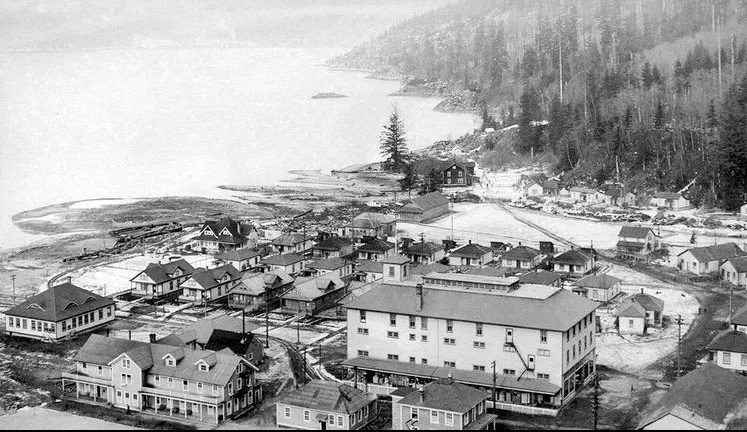
Taken in 1920, this image shows The Big Ship Bunkhouse, the largest bunkhouse at Mt. Sheer that housed 200 men. Credit: Britannia Mine Museum
From the entrance to the mine, you can see Howe Sound on the other side of the railroad tracks, which stands as a reminder of how Britannia Mine helped shape the Sea to Sky corridor that we know today, for good and ill.
“Over 60,000 people from 50 different countries came to work at the mine. The community was thriving. It had a school, a church, and even a bowling alley. For a long period in its history it was considered to be one of the most desirable places to work in the area,” Jang explained.
During the late 1920s and early 1930s, Britannia Mine was considered the largest copper mine in the British Commonwealth, producing around 7,000 tons of ore per day. At the time it was responsible for supplying 17 per cent of the world’s copper.
“This mine was valuable because of the presence of heavy metal. Particularly copper but also zinc for parts of its history, and one thing that has always been true is when water comes into contact with those minerals it picks up traces of them and carries those traces into Howe Sound,” said Jang.
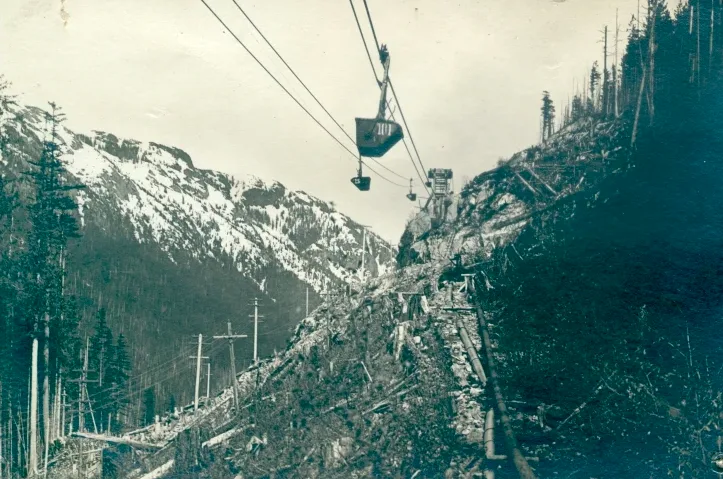
An aerial tramway 5 km long brought ore from the mine — high in the mountains — down to the Mill at Britannia Beach in 1911. Credit: Britannia Mine Museum
When rain and snow fall into the open pits at the mine it is exposed to sulphide mineralization and it forms acid mine drainage. That acid water polluted local waterways like Britannia Creek and eventually flowed into Howe Sound.
When the mine was operating, 40 million litres of mineral-laden waters were discharged into the Sound daily. It was one of the largest sources of metal pollution in North America.
Marine life in the Sound suffered the consequences. “I remember growing up as a young Squamish person learning that the area around Britannia and largely the Sound was dead,” Chris Lewis, a council member for the Squamish Nation, told The Weather Network, recounting his elders' concern for the state of the Sound.
“When the salmon and the herring start to decline we know there is something going on in the ecosystem,” he added.

The iconic Mill 3 is one of Canada's National Historic Sites. Credit: Britannia Mine Museum
According to a 2001 report from the newspaper The Province, polluted runoff from the mine was believed to jeopardize the life of more than four million young salmon every year.
“It is hard for a lot of smaller organisms to survive in areas that are highly contaminated with heavy metals and that has a cascading effect up the food chain,” Jang lamented.
“If things like mussels and barnacles are less able to establish, there is less reason for mobile organisms to come to those areas. We also know from studies that some fish, like salmon, can have their senses impacted if they are exposed to higher levels of copper. This likely reduces their ability to hunt and reduces their reproductive success,” he continued.
High operating costs and taxes forced Britannia mine to shut down in November 1974 after 70 years of operation, but the impacts would be felt for much longer. Smaller organisms like barnacles were less visible in the Sound and larger marine life like whales weren’t seen in the area for decades to come.
REMEDIATION BEGINS
There were no clear environmental protection laws when the mine was operating and there was debate after the mine shut down about who was responsible to clean up the area. The communities surrounding Howe Sound were left with poisoned waters and no real solution.
The Squamish People were the most impacted by the pollution left behind, since the mine was located on the unceded territory of the Skwxwú7mesh (Squamish) First Nation. For more than 3,000 years, the Squamish People have lived on the land. It has been a place to hunt, fish for food, and gather material for shelter. It has been a place where spiritual and ritual traditions have been passed down from elders.
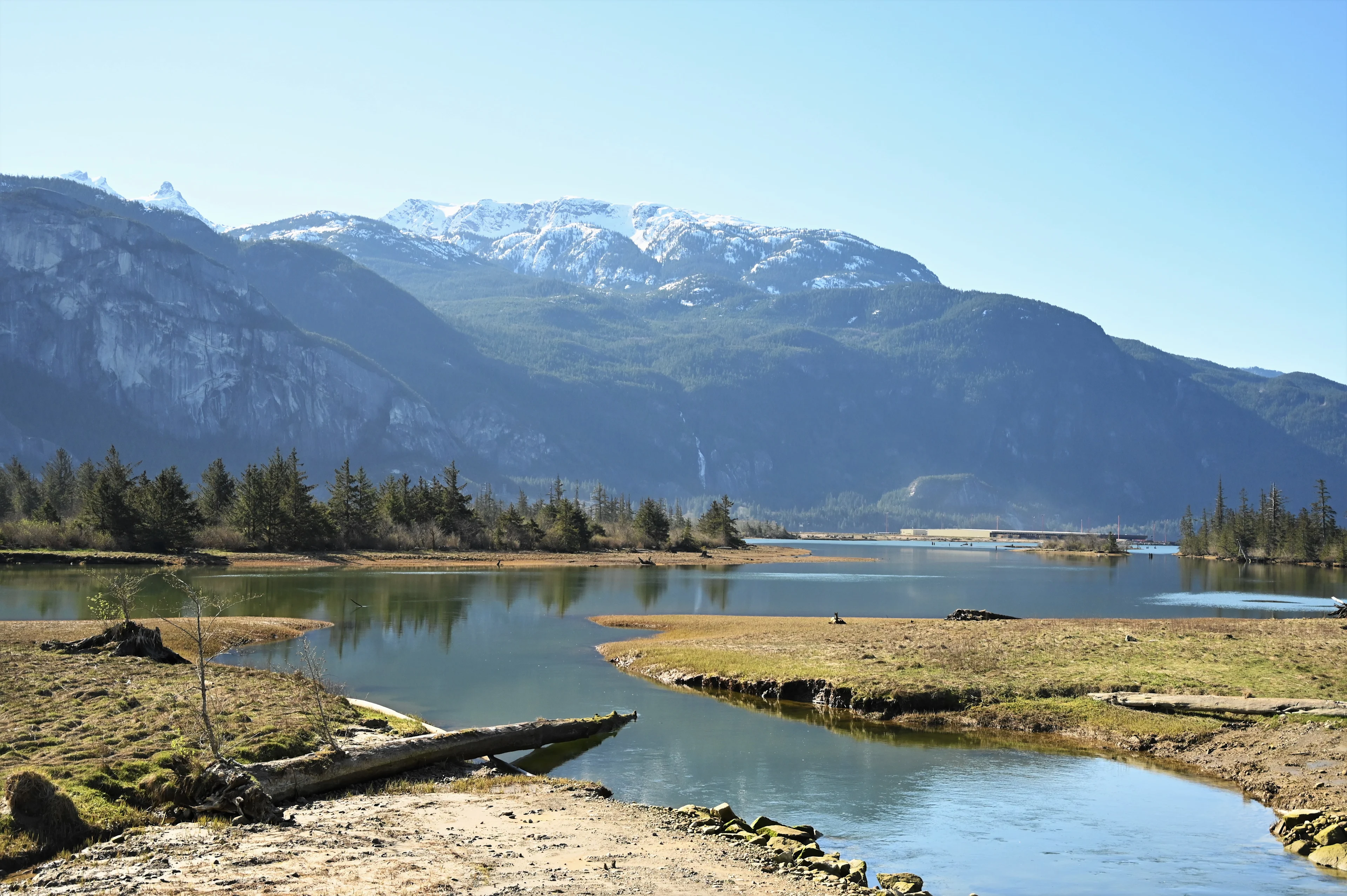
A view of the Stawamus Chief from the estuary. This river runs down into Howe Sound. Credit: Mia Gordon
“We as Indigenous Peoples of this land and belonging to this place have a responsibility to ensure we are passing along something better to the next generation,” Lewis said.
“With that in mind, we really started working on the revitalization,” he added. “We knew we couldn’t do it ourselves and needed to work together with others. We needed to put the government on notice that there was a strong desire of the Squamish People to revitalize the Sound.”
The Squamish Nation along with other community groups and local municipalities started lobbying to the Provincial Government to clean up the Sound, but it wasn’t going to be an easy task since no one really wanted to pick up the multi-million dollar cleanup tab.
In 2000, the B.C. government went after several former owners of the mine, but over the years the companies had changed names and ownership, and so it was hard to prove any liability. Eventually, in 2005, the provincial government signed a $25 million dollar contract with EPCOR.
In 2006, EPCOR opened their facility and treated over four billion liters of water, removing an average of 226,000 kg (or 30 million pennies) of heavy metal contaminants annually. This work helped reduce pollution going into the area by 90 per cent, and slowly life started to return to the Sound.
“It has probably been the last 20 years or so that all these remediation efforts have been put in place that some of the healthy rebound in the Sound has been seen including big cetaceans like whales and dolphins coming back, which hasn’t been seen in a long time,” said Miller from Ocean Watch.
Jang added that, in the last decade, Pacific salmon started returning upstream at Mt. Sheer — something that hadn’t been seen in at least a decade.
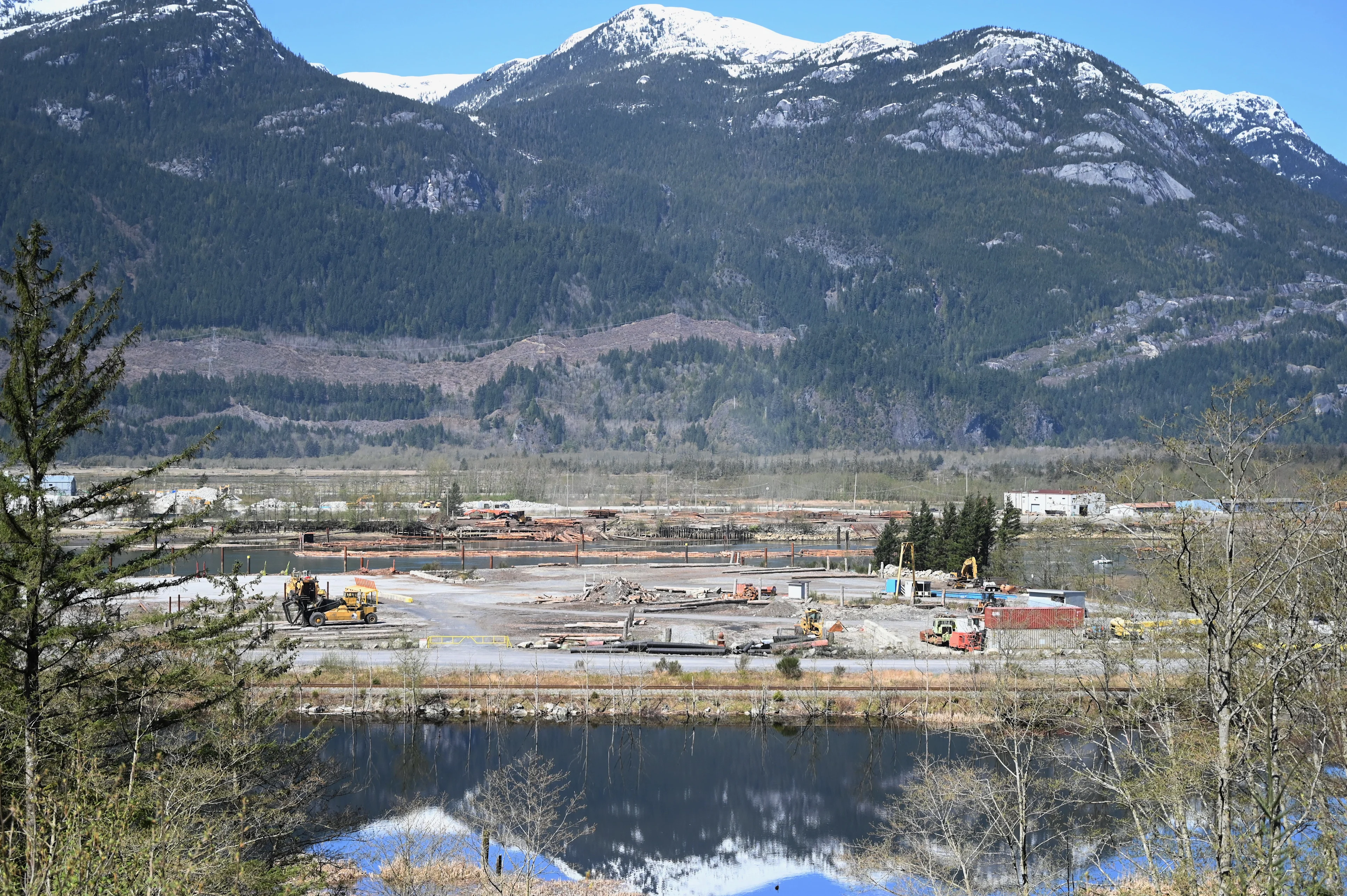
Views of some industry and heavy equipment in Squamish from the Sea to Sky Highway. Credit: Mia Gordon
For the Squamish Nation, the work that was done at Britannia Beach was a reminder of what can be accomplished when different groups with a common goal work together. “I always believe that Britannia and the work that we did around there with others was really a catalyst to start doing other things because it was really one of the first times that we started working together as a community in the Sound,” said Lewis.
PRESENT DAY AND THE IMPACTS OF CLIMATE CHANGE
Howe Sound is still recovering from almost a century of heavy metals polluting the region, and marine habitats are still extremely vulnerable. This time, however, the threat isn’t pollution, but climate change.
In 2017, the Coastal Ocean Research Institute and the Vancouver Aquarium Marine Science Centre worked together to create the Ocean Watch Report featuring Howe Sound.
In the original paper, there was a section on “Oceanography and Climate Change,” but it was located near the end of the report. When they did a follow-up report in 2020, the team realized that most of the climate change concerns hadn’t improved and some even regressed in the three years, so this time climate change was the first chapter.
The report highlights seven different climate themes: 1) climate change 2) zero carbon communities 3) ocean warming 4) ocean acidification 5) shoreline erosion/sea level rise 6) stream flows 7) Squamish flood plan. Every single category was listed as either cautious or critical and the impacts are already being seen first hand.
“We are seeing warmer air temperatures in winter and in summer, increased water temperatures, a lot more marine heatwaves like 'the Blob’ that hammered a lot of species. Also things such as stream flow start to change, the timing of those spring melts which triggers plankton blooms in the marine environment which is the base of the food web in Howe Sound,” according to Miller.
“When you see something from the very bottom starting to change it is kind of like a house of cards. Everything above it is going to change,” she added.
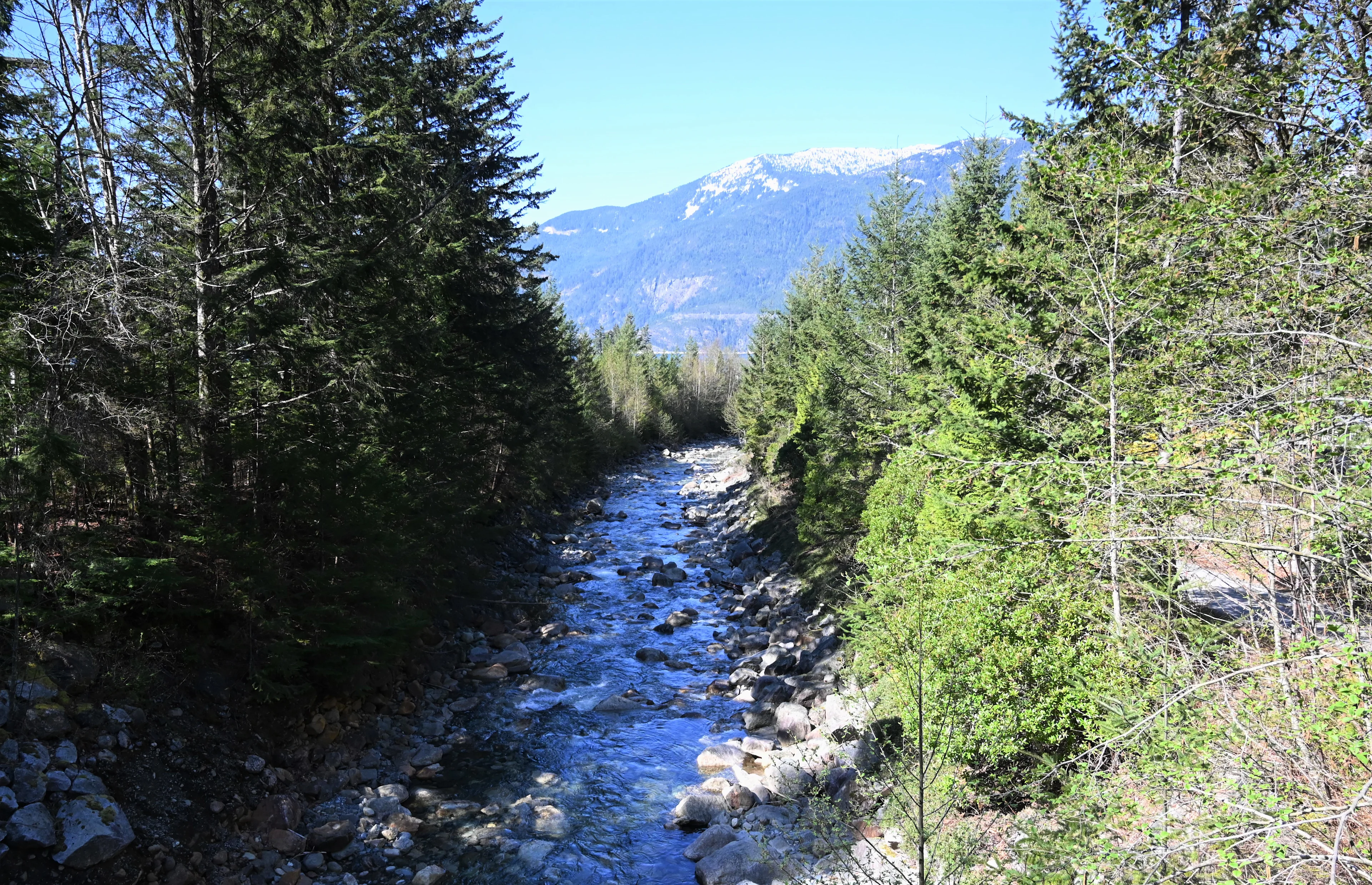
Britannia Creek flowing into Howe Sound. This creek used to be heavily polluted from mining nearby. Credit: Mia Gordon
Some specifics that have already been noted include an increase in algal blooms and animals like crabs being stressed by the increase in acidification that prevents them from forming shells to protect themselves. But it isn’t just marine life that is suffering.
“Storms that are coming through are a lot more intense and a lot more frequent and so there tends to be a lot more shoreline erosion. We have got maybe 10 years before there is irreparable damage,” Miller said.
Lewis echoed the concerns, as his community is also seeing the impacts firsthand. He explained that many Squamish People still gather in the Sound. Lately, however, they aren’t able to find as many fish as they once did. And this isn’t just a concern when it comes to food and their livelihood, it also impacts their ability to keep First Nations’ traditions alive.
“It is an infringement on our culture and who we are as people,” said Lewis. “If the salmon don’t return then the transfer of that knowledge of how to harvest salmon and what to do and the different teachings get lost. We used to harvest different types of whales in the Sound because it used to be a caving ground for the whales. We used to harvest seals and sea lions but we don’t do that anymore because it was lost.”
PREVENTING HISTORY FROM REPEATING ITSELF
There were many lessons from what happened at the Britannia Mine. Shortly after the doors at the mine closed, the building reopened as a museum with a focus on educating visitors about what was learned, and how that has impacted the present and future of both mining in Canada as well as the health of the Sound.
The museum recently launched Terralab, an educational space for students.
“We don’t shy away from conversations about remediation. That means talking to people about the water treatment plant and how it has dramatically reduced the impact of heavy metal exposure in our waters. We also talk about how the mining industry is finding new frontiers for ways to identify and manage their impacts,” says Jang.
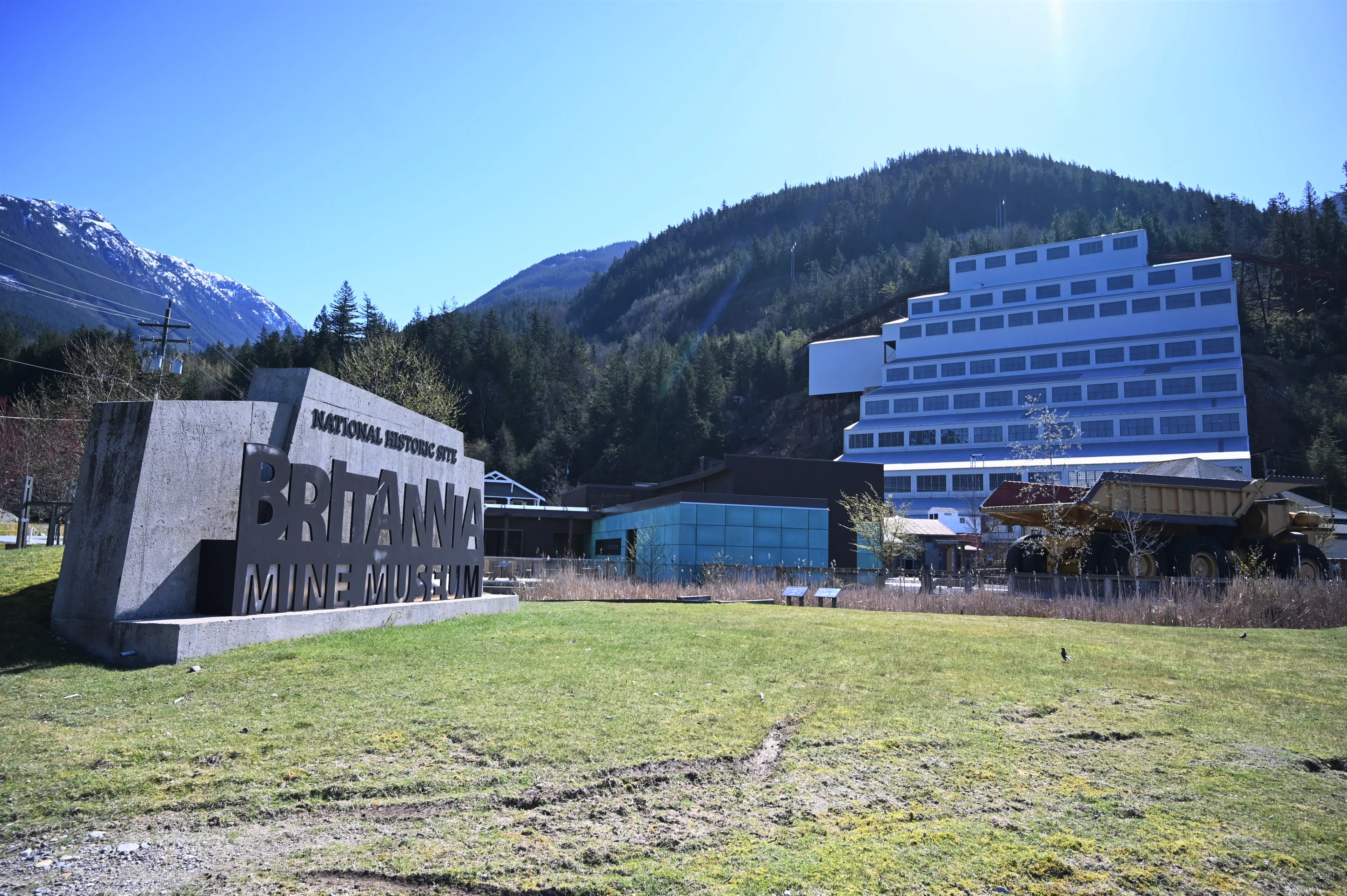
Exterior of Britannia Mine Museum, which offers daily tours to educate the public on mining in Canada. Credit: Mia Gordon
On top of education, another important takeaway from what happened with Brtiannia Mine was that key collaboration can create change. Now, a group has been advocating to make Howe Sound a UNESCO Biosphere Reserve.
“I love the idea of a biosphere reserve because it makes you realize you have to have some core protected areas,” explained Vancouver city councillor Adriane Carr, who is Chair of Metro Vancouver Climate Action Committee and leading the charge for the biosphere designation.
A biosphere is considered a learning place for sustainable development. In the case of Howe Sound, there would be a protected core area where there would be no industrial development and then buffer zones surrounding it, covering 218,720 hectares (84 per cent terrestrial and 16 per cent marine). It will protect First Nations land as well as valuable ecosystems like glass sponge reefs and rock fish habitats, which are seeing the impacts of climate change first hand.
“We have already pushed ourselves up very close to the brink and so we need to take action. We can’t delay,” Carr added.
The proposal was unanimously approved by all necessary parties in B.C. on October 18th, 2019 and was also recently pushed forward in Ottawa. Now it awaits final approval in Paris by summer this year.
While the biosphere is a step in the right direction, it won’t solve all of the climate issues in Howe Sound. That is where the rest of us come into play.
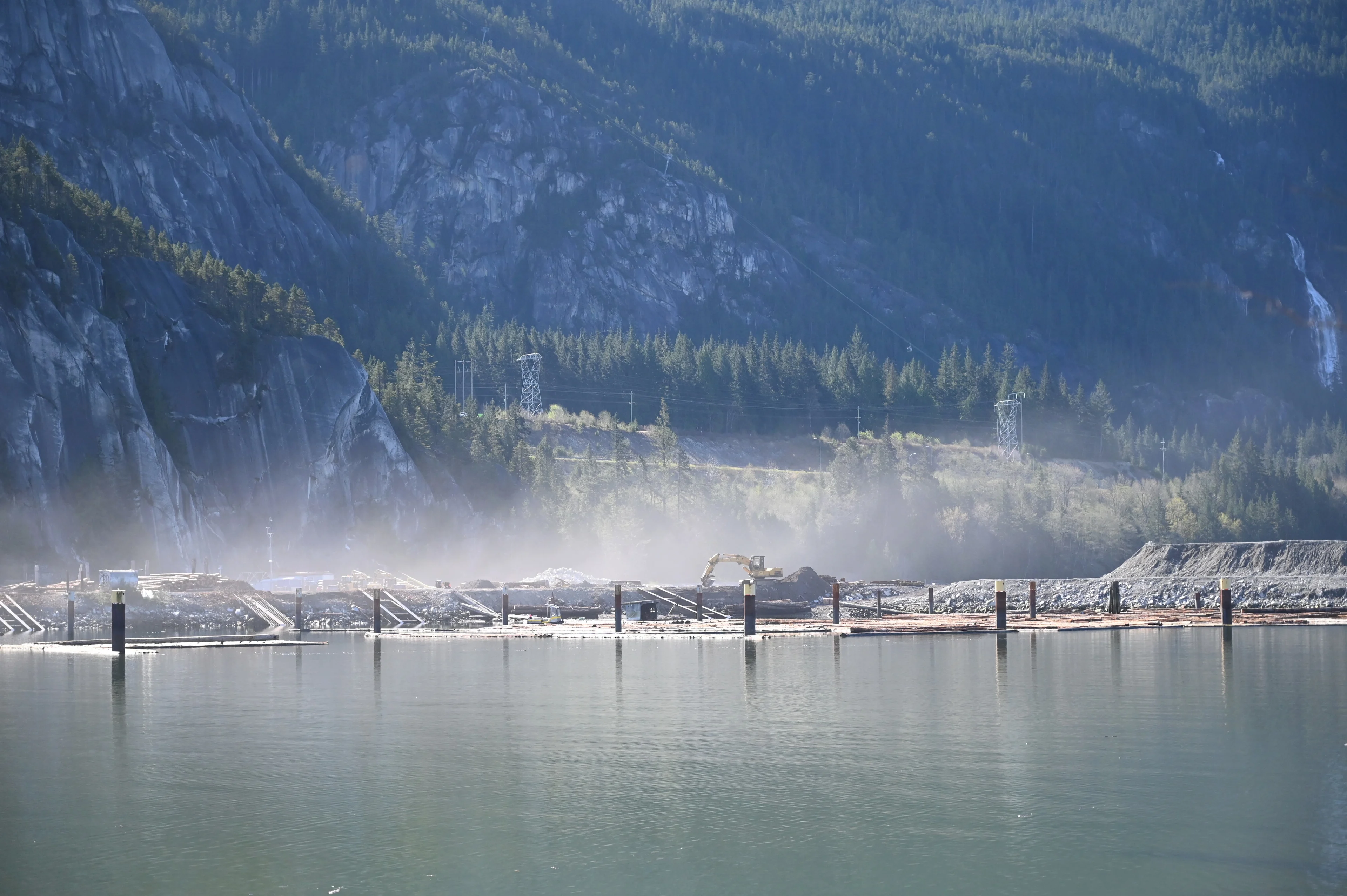
Views of Howe Sound from Squamish where you can see industrial equipment moving logs near downtown. Credit: Mia Gordon
NEXT STEPS FOR HOWE SOUND
“A lot of people want to know what they can do right now. We are in this very instantaneous gratification mindset. But we need to recognize we are in it for the long haul,” said Miller, who also added that the Ocean Watch report contains an entire section on an action plan.
The team behind the report has now developed the Howe Sound Action Committee, which is working closely with local municipalities in the Sea to Sky corridor on what they can do to protect the region.
“I felt really inspired by seeing what the communities are doing out there,” said Miller. “There has been a lot of community initiative and drive to see what they love protected. Together we can do a lot more than individually.”
Thumbnail credit: Cultura Exclusive/Manuel Sulzer. Cultura. Getty Images

